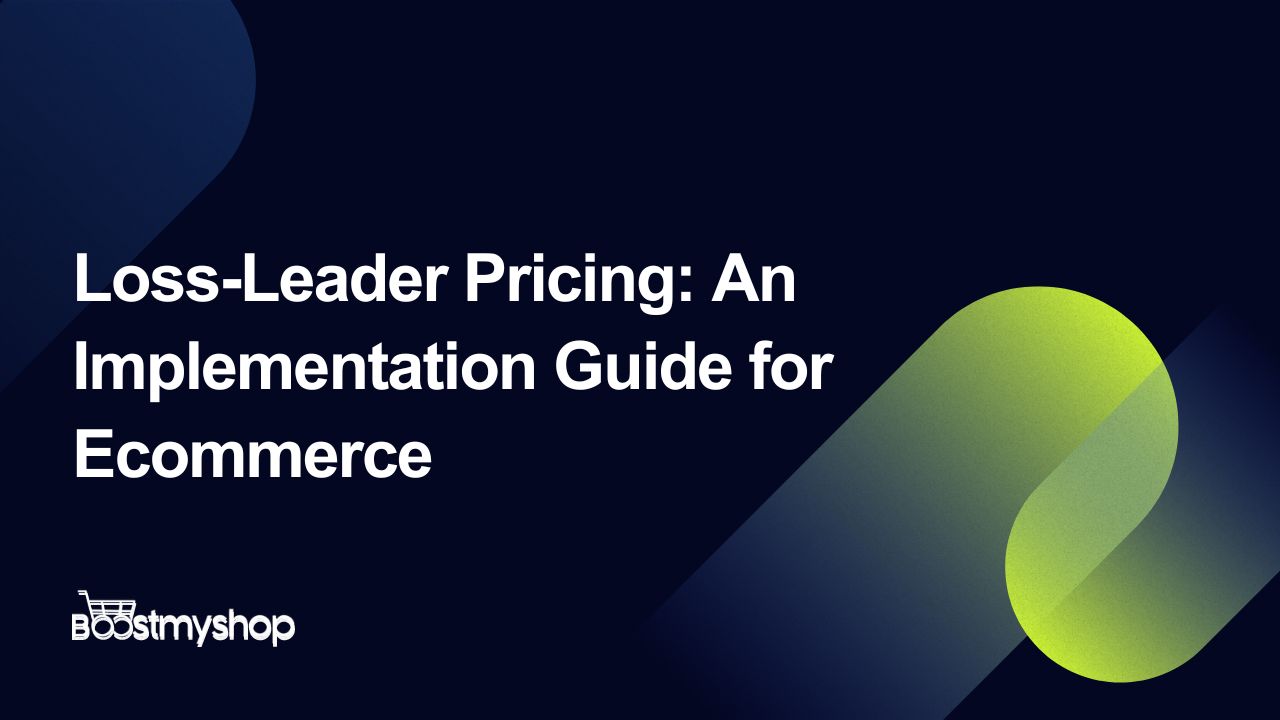E-commerce Market Monitoring Tools You Need in 2025
The Dynamic Nature of E-commerce in 2025
The e-commerce landscape in 2025 is more volatile and competitive than ever before. Driven by rapidly shifting consumer behaviors, dynamic pricing strategies, and continuous technological innovations, businesses must stay agile to thrive. According to Statista, global e-commerce sales are projected to reach $8.1 trillion by 2026, highlighting the immense growth potential-and the fierce competition-that lies ahead.
Why Market Monitoring Is Crucial
In such an environment, market monitoring isn’t just an option; it’s a necessity. Businesses that continuously track market trends, analyze competitor strategies, and respond swiftly to changes are more likely to succeed. Market monitoring enables companies to adapt their offerings, pricing, and marketing strategies based on real-time data, ensuring they remain competitive and relevant.
The Role of E-commerce Market Analysis Tools
E-commerce Market Analysis Tools are the backbone of effective market monitoring. These tools help businesses make data-driven decisions by offering insights into market trends, customer behaviors, and competitor activities. From tracking pricing fluctuations to forecasting demand, these tools provide the intelligence needed to drive growth and maintain a competitive edge.
What is E-commerce Market Monitoring?
E-commerce market monitoring is the continuous process of tracking, analyzing, and interpreting data related to online market dynamics. This includes observing competitor activities, pricing trends, customer preferences, and broader industry movements. The goal is to gather actionable insights that help businesses make informed decisions, optimize strategies, and stay ahead of the competition.
Key Components
- Competitor Tracking: Monitoring competitors’ product offerings, pricing strategies, marketing campaigns, and performance metrics to identify opportunities and threats.
- Price Fluctuation Analysis: Analyzing changes in market prices to adjust pricing strategies dynamically, ensuring competitiveness while maximizing profit margins.
- Demand and Trend Forecasting: Using historical data and predictive analytics to anticipate future market demands and emerging trends, enabling proactive business planning.
- Customer Sentiment Monitoring: Tracking customer reviews, social media mentions, and feedback to gauge public perception, identify areas for improvement, and enhance customer satisfaction.
Why It Matters
Effective market monitoring profoundly affects business performance:
- Revenue Growth: By identifying profitable opportunities and optimizing pricing, businesses can increase sales and profitability.
- Customer Acquisition: Understanding market trends and customer preferences helps in crafting targeted marketing campaigns that attract and retain customers.
- Competitive Advantage: Staying informed about competitors’ moves and market shifts allows businesses to respond quickly, innovate effectively, and maintain a strong market position.
The Growing Importance of Market Monitoring in 2025
In the rapidly evolving landscape of e-commerce, market monitoring has become indispensable for businesses aiming to maintain a competitive edge. The year 2025 marks a pivotal point where several transformative trends are reshaping e-commerce and how it operates, making real-time insights and data-driven strategies more critical than ever.
Trends Driving the Need for Market Monitoring
- Increasing Competition Across Marketplaces: The e-commerce ecosystem is more crowded than ever, with platforms like Amazon, Shopify, eBay, and emerging regional marketplaces witnessing an influx of sellers. As barriers to entry decrease, businesses must continuously monitor competitor activities to understand pricing strategies, product offerings, and promotional tactics. This competitive intelligence helps businesses adapt quickly and avoid losing market share.
- Rise of AI and Automation in E-commerce: Artificial Intelligence (AI) and automation are revolutionizing e-commerce operations. From personalized marketing to automated inventory management, AI-driven tools enable businesses to process vast amounts of data at unprecedented speeds. Market monitoring tools integrated with AI algorithms provide predictive insights, identifying trends before they become mainstream and allowing companies to make proactive decisions.
- Importance of Real-Time Data for Dynamic Pricing Strategies: Static pricing models are becoming obsolete. In 2025, dynamic pricing, which adjusts prices in real-time based on market demand, competitor prices, and inventory levels, is the norm. Effective market monitoring tools collect real-time data, enabling businesses to optimize their pricing strategies for maximum profitability without compromising competitiveness.
Data-Driven Decision Making
Market monitoring is not just about tracking competitors; it’s the backbone of strategic decision-making across various business functions:
- Inventory Management: By analyzing demand trends and sales velocity, businesses can optimize stock levels, reduce overstock risks, and prevent stockouts.
- Pricing Strategies: Real-time insights into competitor pricing and market demand help in setting competitive prices, implementing promotional strategies, and maximizing profit margins.
- Marketing Strategies: Understanding customer sentiment, emerging trends, and competitor campaigns allows businesses to tailor their marketing messages effectively, enhancing customer engagement and conversion rates.
Key Features to Look for in E-commerce Market Analysis Tools
In the rapidly evolving landscape of e-commerce, selecting the right market analysis tools is critical for maintaining a competitive edge. These tools should not only provide insights but also empower businesses to act swiftly and strategically. Here are the key features to consider when choosing an e-commerce market analysis tool:
1. Real-Time Data Tracking
Real-time data tracking is a cornerstone of effective market monitoring. In 2025, where market dynamics shift within hours, having access to up-to-the-minute data is essential. This feature allows businesses to:
- Monitor Price Fluctuations Instantly: Stay updated on competitor pricing changes and market trends as they happen.
- Respond Quickly to Market Changes: Adapt marketing strategies, promotions, and pricing based on real-time insights, minimizing risks and seizing opportunities promptly.
- Enhance Decision-Making: Empower teams with current data to support agile, informed decisions.
2. Competitor Analysis Capabilities
Understanding your competition is key to thriving in e-commerce. Robust competitor analysis features should include:
- Competitor Pricing Monitoring: Track changes in competitor pricing across multiple marketplaces to maintain competitive pricing strategies.
- Promotion Tracking: Identify and analyze competitor promotions, discounts, and marketing campaigns to adjust your tactics accordingly.
- Product Launch Monitoring: Keep tabs on new product launches from competitors to anticipate market shifts and prepare counter-strategies.
3. Pricing Intelligence
Dynamic pricing has become a necessity in modern e-commerce. Market analysis tools should offer advanced pricing intelligence features, such as:
- Automated Dynamic Pricing: Adjust prices automatically based on predefined rules, competitor actions, and real-time market conditions.
- Profit Margin Optimization: Analyze cost structures and competitor pricing to maximize profit margins while remaining competitive.
- Scenario Analysis: Simulate different pricing scenarios to predict their potential impact on sales and profitability.
4. Trend Analysis & Forecasting
Staying ahead of trends can be the difference between leading the market and playing catch-up. Look for tools that provide:
- Historical Data Analysis: Leverage past sales data and market trends to identify patterns and forecast future demand.
- Predictive Analytics: Use AI-driven models to anticipate shifts in consumer behavior, emerging trends, and potential growth areas.
- Demand Forecasting: Plan inventory and marketing strategies based on accurate demand projections, reducing the risk of overstocking or stockouts.
5. Integration with E-commerce Platforms
Seamless integration with major e-commerce platforms ensures efficient data flow and reduces manual workload. Essential integration features include:
- Multi-Platform Compatibility: Support for platforms like Amazon, WooCommerce, Magento, Shopify, and others to centralize data management.
- Automated Data Syncing: Real-time synchronization of sales, inventory, and pricing data across all channels.
- API Accessibility: Flexible API options for custom integrations with existing business systems and workflows.
How Market Monitoring Enhances Your E-commerce Strategy
1. Competitive Pricing Strategies: Reacting to Competitor Price Changes in Real Time
One of the most direct ways market monitoring impacts your e-commerce strategy is through dynamic pricing. By keeping a constant watch on competitor pricing, you can adjust your own prices in real time, ensuring you’re always in line with the market or strategically outperforming your competitors. This flexibility helps maintain a competitive edge in a crowded marketplace, especially on platforms like Amazon, Shopify, and WooCommerce, where pricing plays a pivotal role in consumer decision-making.
Market monitoring tools can provide instant alerts when competitors change their prices, allowing you to make adjustments quickly. This enables your business to stay competitive, offering the best deals or positioning yourself as a premium option, depending on your strategy. Additionally, by analyzing competitors’ promotions and discounts, you can refine your pricing model to maximize profit margins while staying attractive to potential customers.
2. Optimized Product Listings: Data-Driven Adjustments for Better Visibility and Conversions
With the wealth of data at your disposal, market monitoring tools allow for continual optimization of your product listings. Whether it’s adjusting product descriptions, keywords, or images, the ability to compare your listings with competitors’ gives you insights into areas where you can improve. For instance, if competitors are receiving better visibility with certain keywords or descriptions, you can adapt your approach accordingly.
Beyond just textual optimization, market monitoring tools often provide insights into the most popular products and search trends, allowing you to tailor your product offerings to match current demand. Understanding what products are trending or facing a rise in search interest can help you prioritize your inventory and improve visibility, leading to higher conversion rates.
3. Improved Inventory Management: Predicting Demand to Avoid Stockouts or Overstock
Managing inventory can be one of the most challenging aspects of running an e-commerce business, but market monitoring tools make it easier. By tracking competitors’ stock levels and observing sales trends, you can gain insights into demand fluctuations and anticipate what products will sell out or need restocking.
Real-time data helps you avoid stockouts by predicting demand based on historical sales data, current market trends, and competitor movements. Conversely, market monitoring also helps in identifying when you may be overstocking certain items, reducing the risk of tying up capital in unsold inventory. This balance optimizes inventory turnover and prevents unnecessary storage costs, making your entire supply chain more efficient.
4. Increased Customer Satisfaction: Meeting Customer Expectations with Timely Updates and Competitive Offers
In the e-commerce world, customer satisfaction is everything. One of the best ways to ensure you meet customer expectations is by staying ahead of market trends and pricing fluctuations. Market monitoring tools provide you with the necessary insights to respond to customer demands quickly and proactively.
When customers expect timely delivery, competitive pricing, and up-to-date product information, market monitoring allows you to anticipate their needs. For example, if a competitor runs a sale or drops prices on a product, you can offer similar discounts or bundle promotions to retain your customer base. This responsiveness not only boosts customer loyalty but also increases retention rates, as consumers will appreciate your brand’s agility in adapting to market changes.
Challenges in Market Monitoring (and How to Overcome Them)
1. Data Overload: Managing Large Volumes of Data Efficiently
In today’s fast-paced e-commerce landscape, businesses have access to more data than ever before. While this provides a wealth of opportunities, it also presents the challenge of managing vast amounts of information efficiently. With competitors’ pricing, demand forecasts, customer sentiment, and real-time inventory changes constantly flowing in, it can be overwhelming to process and act on this data without proper tools and strategies.
Solution: By leveraging advanced market monitoring tools like myMarket, businesses can automate the collection and analysis of data, reducing the burden of manually sifting through large datasets. These tools aggregate and organize data, allowing merchants to quickly access actionable insights without the need to analyze every detail. Furthermore, custom dashboards and alerts help highlight the most critical data, ensuring that businesses can focus on what’s most relevant for their strategy.
2. Keeping Up with Algorithm Changes: Adapting to Platform Updates
E-commerce platforms and search engines regularly update their algorithms to improve user experience, prioritize certain types of content, or refine ranking processes. These frequent updates can make it difficult for e-merchants to keep track of how their listings, pricing, or inventory are performing. For example, changes to Amazon’s ranking algorithm or Google’s search algorithm may impact the visibility of product listings, making it harder to maintain optimal market positioning.
Solution: With automated tools like myMarket, businesses can stay informed about changes on major e-commerce platforms. These tools are often equipped with built-in flexibility to adjust to evolving algorithms, ensuring that merchants can continually optimize their strategies. Staying ahead of algorithm changes also means regularly monitoring platform updates, a process made much easier with automated alerts that keep businesses informed when significant updates occur.
3. Accuracy of Insights: Ensuring Data Quality and Reliability
Accurate market insights are essential for making informed decisions, but not all data is created equal. Incorrect or low-quality data can lead to misguided decisions, resulting in lost opportunities or missed revenue. This is especially critical in areas like pricing optimization, where even small inaccuracies can lead to significant profit losses.
Solution: To ensure the quality and reliability of insights, businesses need access to reputable and robust data sources. Market monitoring tools like myMarket utilize advanced AI algorithms to analyze and verify data before presenting it to users. By cross-referencing various sources and using intelligent filters, these tools can identify and eliminate unreliable or inconsistent data, ensuring that the insights provided are actionable and trustworthy.
The Future of E-commerce Market Monitoring
1. Role of AI & Machine Learning: Predictive Analytics, Personalized Pricing, and Automation
As AI and machine learning technologies continue to evolve, they will play a more significant role in shaping the future of market monitoring. Predictive analytics will become even more precise, allowing e-commerce businesses to anticipate market trends, customer behavior, and demand patterns with greater accuracy. Machine learning algorithms will continually improve by learning from past data, providing more refined insights that empower businesses to make smarter decisions.
Personalized Pricing: With AI, businesses can create personalized pricing strategies that adjust in real-time based on individual customer behavior, competitor movements, and market conditions. By understanding customer preferences and purchasing habits, AI-powered tools can offer tailored pricing that maximizes sales and margins.
Automation: Automation will streamline decision-making processes, from adjusting prices to optimizing product listings. With AI taking care of repetitive tasks, e-commerce businesses will be able to focus on high-value strategy, further increasing efficiency and profitability.
2. Integration with IoT and Advanced Analytics: Real-Time Data from Multiple Sources
The Internet of Things (IoT) is transforming the way e-commerce businesses operate by providing real-time data from physical products, warehouses, and even customers’ devices. This influx of real-time data allows businesses to fine-tune their strategies with unprecedented accuracy.
Integration with IoT: E-commerce businesses will increasingly rely on IoT-enabled devices to track product usage, monitor inventory levels, and predict future demand. Market monitoring tools will integrate this IoT data with other analytics platforms, providing businesses with a holistic view of their operations and customers.
Advanced Analytics: As data collection expands, advanced analytics will become crucial for deciphering complex datasets. By combining IoT data with historical market information and real-time monitoring, businesses can gain deeper insights into demand, customer behavior, and operational efficiency, which will be vital for staying ahead in the competitive e-commerce landscape.
3. Hyper-Personalization: Tailoring Offers Based on Real-Time Consumer Behavior
As customer expectations continue to rise, the need for hyper-personalized shopping experiences will intensify. Market monitoring tools will evolve to provide real-time insights into consumer behavior, allowing businesses to tailor their offers, recommendations, and marketing strategies in real time.
By analyzing customer interactions, past purchases, browsing habits, and social media activity, businesses will be able to create highly personalized offers that appeal to individual preferences. This approach not only improves the likelihood of conversions but also enhances customer loyalty by making consumers feel understood and valued.
By leveraging these tools, you can track competitors, adjust pricing strategies, forecast demand, and optimize inventory in real time. The insights provided by market monitoring are crucial in ensuring that you not only respond to market shifts but also proactively drive growth and profitability.
In 2025, market monitoring will be even more powerful with AI-driven solutions, predictive analytics, and real-time data integration. The future belongs to those who embrace these technologies, allowing them to make data-driven decisions and outpace competitors.





